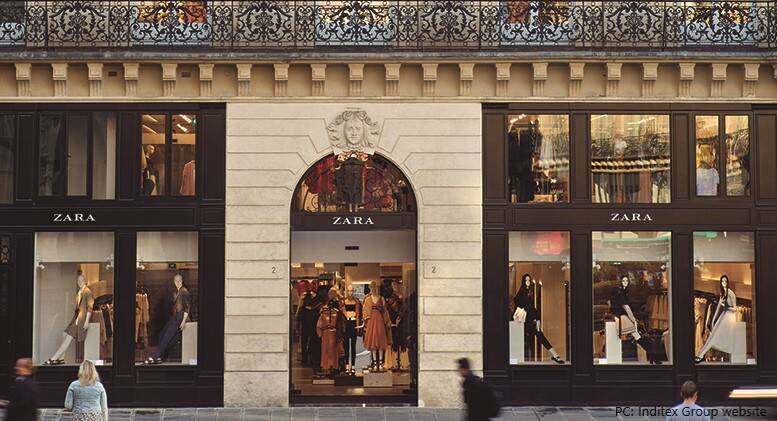The restoration in Zara retailer gross sales and the robust momentum in on-line gross sales are the outcomes of the Group’s strategic dedication to high quality throughout all phases: design, product, retailer house and repair requirements.
The collections created by the design workforce have been met with an enthusiastic response from prospects within the third quarter, which marks the beginning of the autumn-winter season. This engagement with prospects was bolstered by the new expertise instruments being enabled by Inditex’s distinctive built-in store-online platform displaying how involved Zara shops are in adopting digital transformation.
Inditex Open Platform
The Group continued to make progress on this technique all through the nine-month reporting interval, growing its proprietary software program, the Inditex Open Platform, increasing its built-in inventory administration system, which is now operational in 6,000 shops, and providing the ‘Retailer Mode’, a digital characteristic at present provided to prospects by Zara and Massimo Dutti which reinforces the power to interact with trend in shops.
As a part of this transformation, the Group’s manufacturers proceed to open bigger shops outfitted with next-generation expertise, absorbing smaller items within the course of. As of the October shut, the Group had 7,197 shops positioned in prime procuring areas everywhere in the world.
Zara retailer on Wangfujing
Throughout the nine-month reporting interval, the Group opened shops in 25 markets, of notice was the launch in October of the enduring Zara retailer on Wangfujing (Beijing), one of many Chinese language capital’s most important shopping streets. With over 3,500 sq. metres unfold over 4 storeys, this new flagship retailer is now our largest in Asia.
The shop, which meets all the Group’s newest eco-efficiency requirements, showcases the strategic integration of retailer and on-line gross sales with a devoted space for the fulfilment of on-line orders.
Retailer opening within the Kingdom Heart in Riyadh
Different highlights for Zara included retailer opening within the Kingdom Heart in Riyadh (Saudi Arabia) and the reopening within the Bahía Sur procuring centre in Cadiz (Spain). Pull&Bear, Massimo Dutti, Bershka, Stradivarius, Oysho, Zara Dwelling and Uterqüe in the meantime launched new shops in China, Russia, Romania, Colombia, Mexico, the Philippines, Indonesia and Kazakhstan, amongst different locations, and reopened current shops in nations corresponding to The Netherlands, Germany and France throughout the reporting interval.
In parallel, all of the Inditex manufacturers continued to increase the attain of their on-line sales platforms, to the extent that their numerous collections at the moment are accessible on-line in additional than 200 markets.
Zara’s on-line gross sales
Zara’s on-line gross sales are already built-in into its native retailer networks in some 85 markets, complemented by on-line gross sales in 106 extra markets by way of Zara.com/ww. Zara.com launched in 12 new markets, together with Chile, Georgia, Kazakhstan, Montenegro, Costa Rica, Honduras, Guatemala, Nicaragua, El Salvador and Tunisia throughout the quarter. Subsequently, throughout the fourth quarter, the built-in platform has been launched in Iceland, Puerto Rico, Panama and Cyprus, having been rolled out in Argentina, Peru, Uruguay, Paraguay, Bosnia-Herzegovina, Albania or Algeria throughout the first two quarters of the yr.
The remainder of the manufacturers having been following go well with, deploying their built-in on-line choices in a bunch of markets, together with Serbia, Ukraine, Israel, Colombia, Saudi Arabia, Kuwait, Qatar, United Arab Emirates, Egypt, South Africa and Morocco, whereas Lefties launched its on-line platform in Spain and Portugal.
TechnologyHQ is a platform about business insights, tech, 4IR, digital transformation, AI, Blockchain, Cybersecurity, and social media for businesses.
We manage social media groups with more than 200,000 members with almost 100% engagement.








































